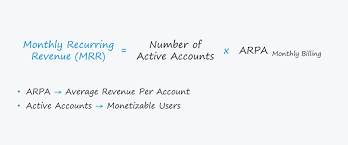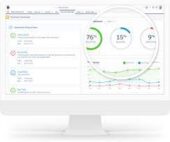Understanding and Growing Your Monthly Recurring Revenue (MRR)
Monthly Recurring Revenue (MRR) is a vital metric for subscription-based and managed services businesses. It indicates whether your business is growing or shrinking and is crucial for making strategic decisions. Understanding and Growing Your Monthly Recurring Revenue is a key to building, monitoring, and exploding your pipeline.
What is Monthly Recurring Revenue (MRR)? While revenue represents your company’s total income, MRR is the predicted monthly revenue from active subscriptions. It includes all recurring charges such as subscriptions, service retainers, promos, discounts, and add-ons, but excludes one-time fees.
Why is MRR Important? MRR provides insights into financial performance, growth potential, churn, and customer value. It is essential for strategic planning and investor relations.
Benefits of Calculating MRR:
- Predictability: MRR helps forecast revenue accurately, representing consistent monthly income from subscription fees.
- Performance Measurement: Monitoring MRR over time helps understand and compare growth rates. Steady increases indicate positive performance, while declines may signal issues like customer churn.
- Investor Confidence: Investors view MRR as a measure of a subscription-based business’s health and stability. Strong growth trends can attract investors.
- Budgeting and Planning: MRR provides a solid foundation for budgeting and resource allocation, aiding decisions about marketing, R&D, hiring, or expansion.
- Customer Lifetime Value (CLV): MRR contributes to CLV calculations, estimating the total revenue a customer generates over their lifetime as a subscriber.
Types of MRR:
- New MRR: Revenue from new customers subscribing within a given month.
- Expansion MRR: Revenue from existing customers upgrading their subscription plans or adding features.
- Contraction MRR: Revenue lost when customers downgrade their subscription or retainer plans.
- Churn MRR: Revenue lost due to customers canceling their subscriptions.
- Reactivation MRR: Revenue from customers who previously churned but reactivated their subscriptions within a given month.
How to Calculate MRR: The basic formula for MRR is:
MRR=Number of active accounts×Average monthly revenue per accounttext{MRR} = text{Number of active accounts} times text{Average monthly revenue per account}MRR=Number of active accounts×Average monthly revenue per account
Steps to Calculate MRR:
- Identify all sources of recurring revenue, such as subscription fees, add-on fees, monthly service charges, or retainer fees (exclude taxes).
- Count the number of subscribers for each offering.
- Multiply the number of subscribers by the monthly price of each plan.
- Sum the monthly revenue from each plan to get the total MRR.
Example Calculation:
- Plan A: $50 per month with 100 subscribers
- Plan B: $100 per month with 50 subscribers
MRR=(100×$50)+(50×$100)=$5,000+$5,000=$10,000text{MRR} = (100 times $50) + (50 times $100) = $5,000 + $5,000 = $10,000MRR=(100×$50)+(50×$100)=$5,000+$5,000=$10,000
So, the MRR for that month would be $10,000.
Advanced MRR Calculations:
- Net MRR: Accounts for revenue lost due to downgrades or cancellations and gained from upgrades. Net MRR=MRR at end of month−MRR at start of monthtext{Net MRR} = text{MRR at end of month} – text{MRR at start of month}Net MRR=MRR at end of month−MRR at start of month
- Churned MRR: Revenue lost from customer churn. Churned MRR=Number of customers churned×Average monthly subscription fee per customertext{Churned MRR} = text{Number of customers churned} times text{Average monthly subscription fee per customer}Churned MRR=Number of customers churned×Average monthly subscription fee per customer
- Expansion MRR: Revenue gained from customer upgrades. Expansion MRR=Number of customers who upgraded×Difference in monthly subscription fees before and after upgradetext{Expansion MRR} = text{Number of customers who upgraded} times text{Difference in monthly subscription fees before and after upgrade}Expansion MRR=Number of customers who upgraded×Difference in monthly subscription fees before and after upgrade
- Total MRR: Comprehensive view of MRR. Total MRR=New MRR+Expansion MRR−Churned MRR+Reactivation MRRtext{Total MRR} = text{New MRR} + text{Expansion MRR} – text{Churned MRR} + text{Reactivation MRR}Total MRR=New MRR+Expansion MRR−Churned MRR+Reactivation MRR
Growing Your MRR:
- Focus on Better Lead Management:
- Use a CRM to manage leads effectively by capturing, tracking, and nurturing potential customers through the sales pipeline. Implement lead scoring to prioritize high-value leads.
- Prioritize Personalization:
- Segment customers based on demographics, behavior, purchase history, etc. Personalize marketing campaigns, upselling strategies, and product offerings to specific customer needs.
- Identify Cross-Selling and Upselling Opportunities:
- Analyze customer data to understand preferences and use targeted marketing campaigns to encourage upsells and expansions.
- Manage, Engage, and Support Customers:
- Use subscription management tools to oversee billing, renewals, and upgrades. Reduce churn by providing a seamless customer experience and monitoring satisfaction rates.
- Evaluate Your Pricing:
- Consider increasing prices if you stay relevant and provide value. Test ways to raise prices without losing customers or causing churn.
- Leverage Analytics and Reporting:
- Use dashboards to monitor MRR and identify patterns. Regularly analyze key metrics to improve sales and marketing strategies.
MRR is a crucial metric for understanding your customers, finances, and growth potential. By tracking and managing MRR, you can make informed decisions and drive sustainable business growth. As the subscription-based and managed services landscape evolves, prioritizing MRR is essential for improving and innovating revenue streams.













